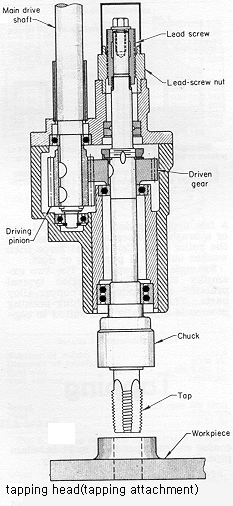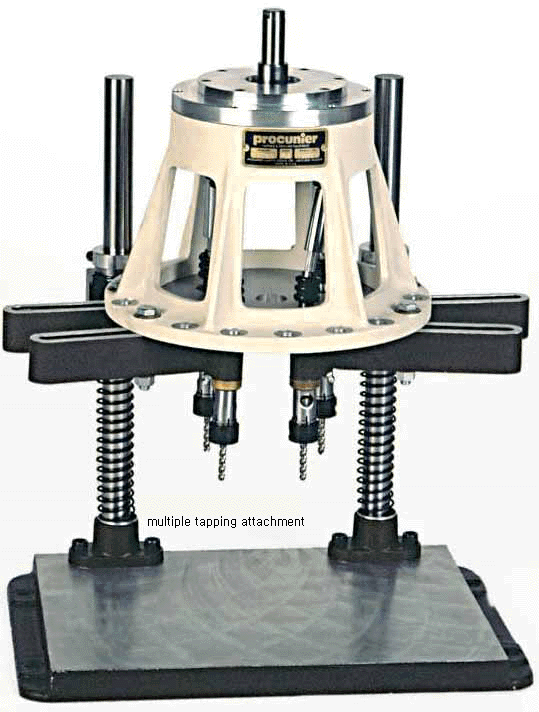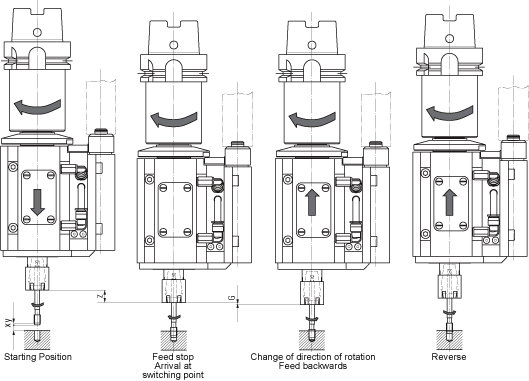|
(1) tapping attachment
drilling machine에 부착하여 tap을 동력으로 회전시키는데 사용되는 것으로서
spindle이 하향할 때 시계방향으로 회전하며, tap이 밀착(stuck)되거나 chip이 충전되어
회전력이 과대하게 되면 마찰 clutch가 미끄러져 tap의 파단을 방지한다.
lever를 들어 올리면 역전기구가 작동하여 tap이 구멍에서 빠질 수 있게 되어있다. >
(2) Tapping attachments
When tapping is done on a drill press, there must be some way to back the tap out of the hole. Most radial
drills are equipped with a reversing spindle. Upright and sensitive drill presses are not usually equipped with
spindle reversing capabilities, thus a special attachment for this operation is required.
An automatic reversing tapping attachment (Figure 6) has a tapered sleeve that is inserted into the spindle of
the drill press. When tapping a hole using a tapping attachment, the tap is lowered into the hole and fed to
the proper depth manually.
When the drill press spindle is raised, gears within the tapping attachment are engaged, causing the tapping head
to reverse, quickly backing the tap out of the hole. The tapping attachment can also be equipped with adjustable
friction drives that stop the rotation of the tap whenever the tapping torque exceeds a pre-set torque limit,
thus keeping the tap from breaking.
(3) The Function of SWITCH-MASTER
During the complete thread cutting cycle the machine spindle rotates right-hand. After reaching the programmed
feed depth the Z-axis switches to reverse without dwell time.With the interaction between feed reverse of the
Z-axis and the positive feed caused by the pitch of the rotating tool, the tool adaptation clamping head is
axially pulled out of the tapping attachment.
This pulling out brings about the reversing of the rotating direction (reverse). After the tool leaves the produced
thread, the spring-loaded tool adaptation clamping head is pulled back into its initial position and the tool
again changes the rotating direction. The auxiliary energy - "compressed air" - required for the switching procedure
must be available permanently with 85 psi at the tapping attachment during the whole machining process.
|



